I am not completely happy with the preceding two posts. In order to do a better job of characterizing the vibration effects of the a7R’s shutter, I need to get further from the ‘scope, make the light path longer with mirrors (no smoke), or come up with a completely different way of making the measurement.
Instead of letting that hold up the rest of my analysis of the a7R, I’m just going to press on.
The first thing I normally do when I analyze a camera is see if there are self-heating effects that I need to watch out for. If there are, it makes the testing process take a lot longer, since I have to wait between test exposures. Fortunately, these effect have not usually been material. However, I can’t count of that, so here’s how I test.
I make a series of exposures of the back of the lens cap with the aperture set to the physically smallest opening, the ISO at 3200, and the shutter speed at 1/4 second (if there’s no long-exposure noise reduction at that setting). The file format was raw. With the a7R, with the 80MB/s SD card I used, at ¼ second, the camera’s buffer capacity wasn’t an issue; it is happy to make exposures at about one-second intervals all day long.
I use Rawdigger to analyze the files, and Excel to do the statistics.
Here’s the average noise floor over 64 exposures. I’ve plotted the red and blue channels, and the average of the two green channels over a rectangle that includes the central 90% of the pixels.
There is no increase in noise do to self-heating at all. In fact, the straight line fit to the green data with least-squares error criterion shows a slight decrease over time.
Plotting the standard deviation produces similar results:
I repeated the results at 1/30 of a second.
The average noise:
and the standard deviation:
Now there is a little bit of self-heating, but not enough to worry about. There is an odd effect; the noise is different in the three color channels. This has nothing to do with the Color Filter Array (CFA), since there is no light falling on the sensor. The differences are very small, but consistent. I suspect that Sony is doing some channel scaling of the putatively raw data. I’ll keep an eye out for more evidence of this going forward.
For completeness, I looked at 1/4000 second exposures. First, the averages:
And next, the standard deviations:
Again, except for the outlier in the blue channel, not much difference. There’s an inconsequential amount of noise due to self-heating, and we see the same noise differences across the color channels.
At ISO 100 at ¼ second, there is no measurable self-heating effect, but a lot of statistical jumping around. Note that the average noise level is a lot lower than you’d think it would be – about 22 dB down from full scale. We saw this to a lesser degree with the M240, and I suspected that it was the result of a negative offset ahead of the analog-to-digital converter, and was the cause of the M240’s green shadows.
The standard deviation looks similar:
Looking at the histogram of the noise floor at ISO 3200 at 1/30th, we see normal behavior, with no evidence of red and blue channel prescaling (note that the horizontal axis is linear and the vertical axis is logarithmic):
The histogram at ISO 200 and 1/30 indicates an incredibly – and I use that word advisedly — low noise floor:
No self-heating to worry about.
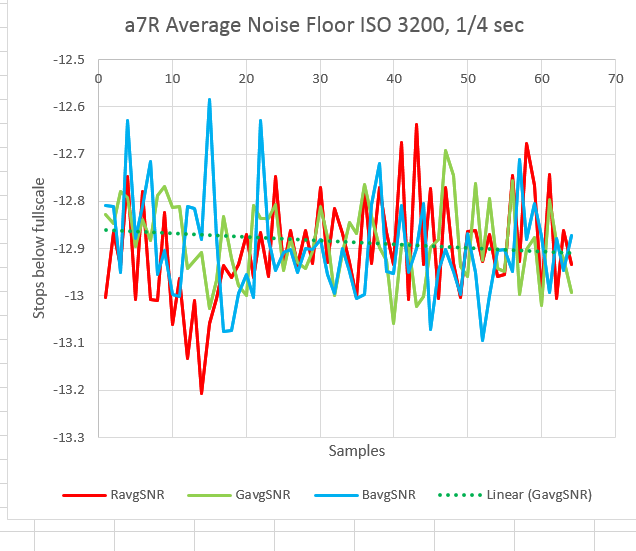
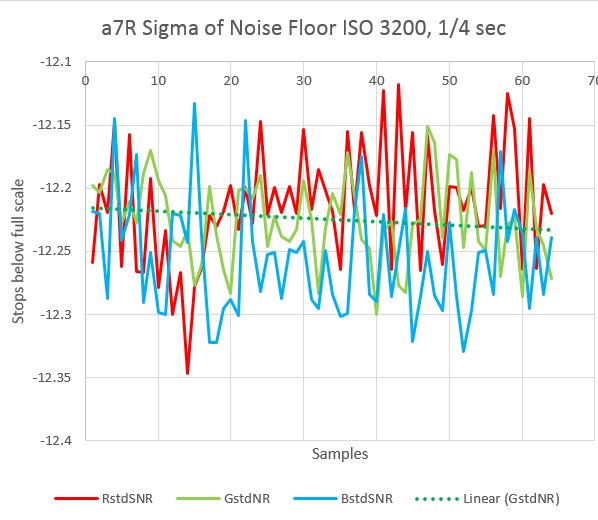
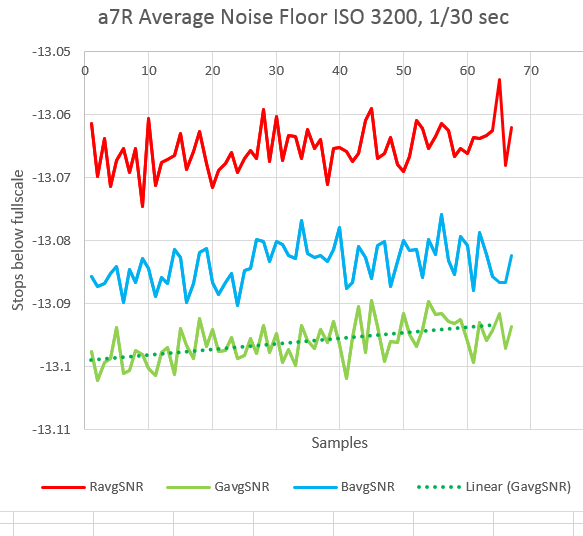
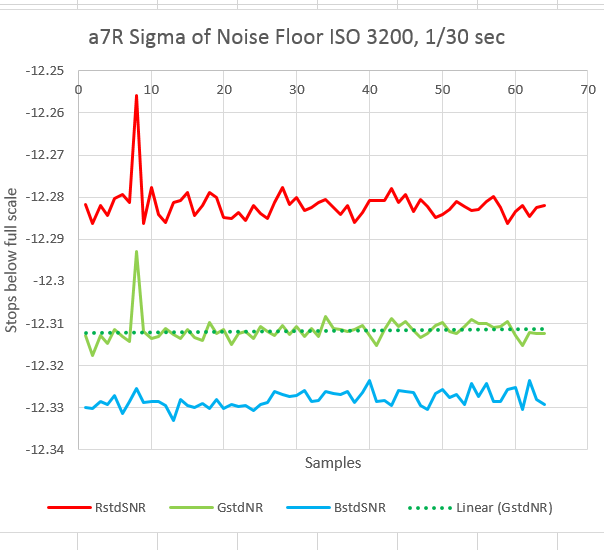
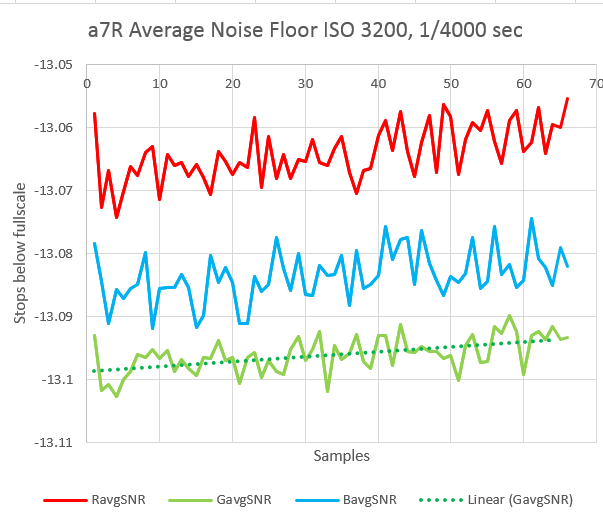
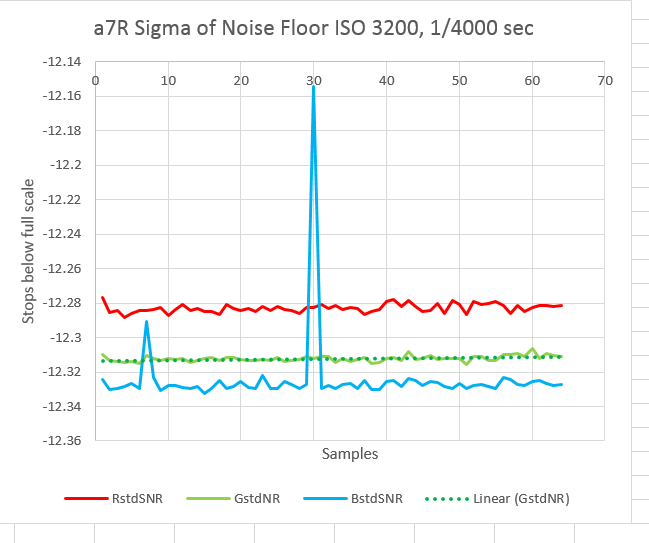
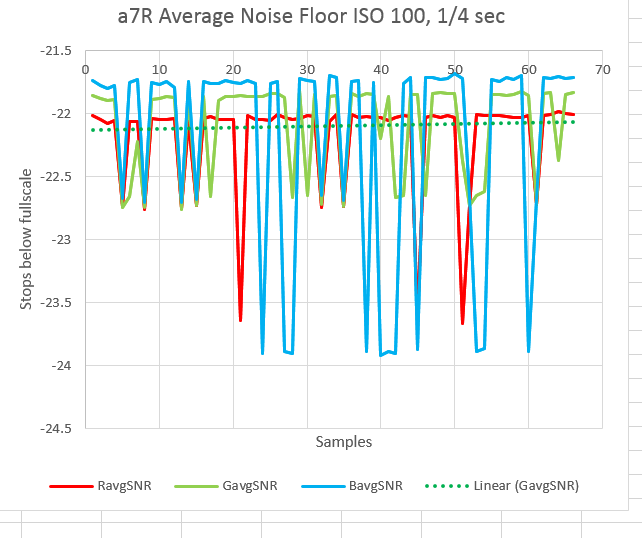
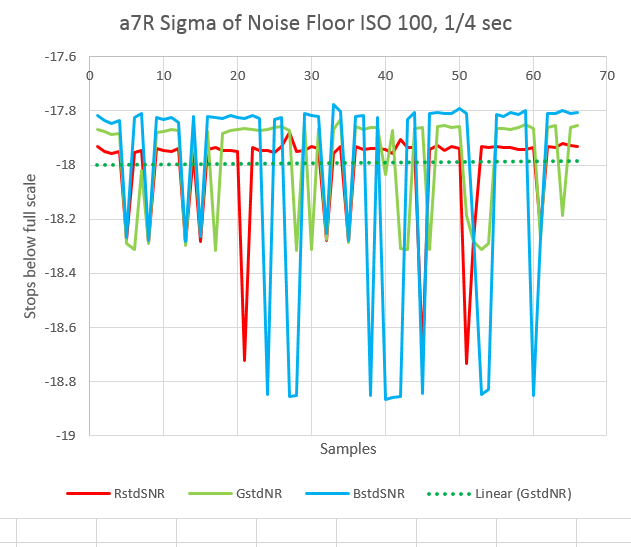


Leave a Reply